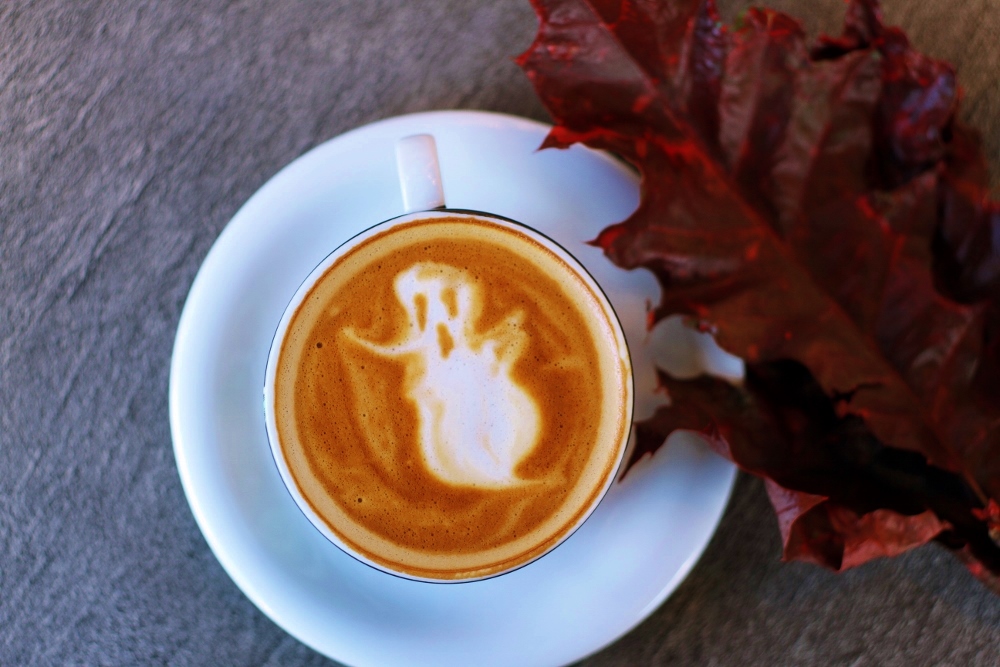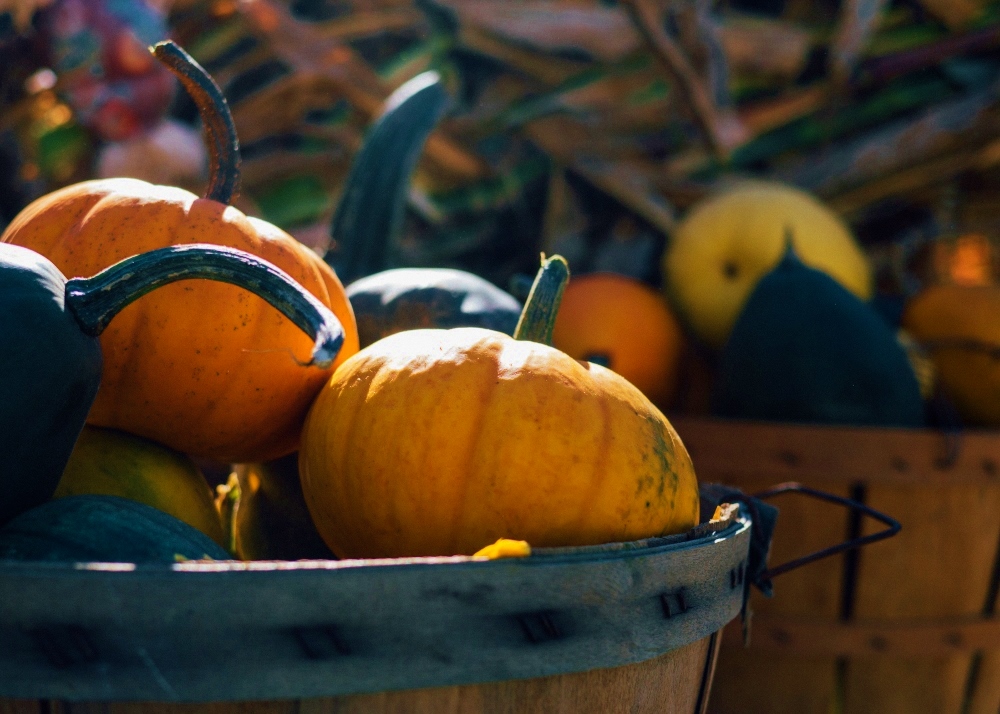
Underneath all the bonhomie lurks what Halloween actually is. Halloween is the night for giving the devil his proverbial due. (Unsplash/Toa Heftiba)
In the early days of fall, most tributes to the season are so merrily cozy as to border on the saccharine. The golden mellowness of the not-yet-curtailed sunshine seems to encourage it; the apple picking, the sweater wearing and leaf peeping, the hot cider — these all bespeak a peaceful interim, a time of abundance and reaping.
Halloween is no exception. Stores have already begun to stock bright orange bags of Reese's Pieces candy, painted masks twisted into rubbery grotesques, and cheap polyester witch's capes. The elder set, meanwhile, buys or invents costumes that range from the scanty and perfunctory to the puckishly abstract and referential. Above lawns dotted with fake tombstones, cotton cobwebs hang from sycamores; the skeleton on the porch seems to wink at you, chummily open about his inability to inspire real dread. The whole affair has the capacious feel of a carnival: sometimes riotous, frequently bawdy, mostly wholesome, all basically friendly.
But underneath all the bonhomie lurks what Halloween actually is. Halloween is the night for giving the devil his proverbial due. Halloween is the shadows made by the flicker of a candle, the long waning of the light. Halloween is a tremor of ancient hostility in the earth to which death trammels us. Halloween is the ice in your backbone as your aunt tells you what she saw one night that can't quite, no matter how you try, be explained. Halloween is the yearly reminder that the light and peace Christ brings are not natural, dependable qualities of our postlapsarian world. The world has been ransomed, but its dethroned prince still prowls, ravenous and full of malice. The Halloween pilgrim sets out among friends to visit the houses of the living, but just beyond the reach of the street lamps lie the wood and the graveyard, primordial strangeness and primordial curse.
Most of the time we are shielded. We find a foothold in the stuff of everyday life, in comforts, affections, entertainments, anxieties, problems, and attach ourselves to it snugly, secure against what might lie beneath the surface. That's as it should be. Life is for the living.
But every once in a while, the defenses break down and we remember that however snug our lives, they are short; however well-ordered our routines, they are no match for the sheer vastness of possibility in the wild and wicked world through which we are pilgrims; that however easy it is to forget, the living and the dead might have more in common than the living might like to admit.

(Unsplash/Aaron Burden)
The month of October, with its mellow sunshine and harvest cheer, is a good time for indulging the human craving to be a little spooked — the desire to acknowledge, if only for a time, the howling wildness of the world. There are more things in heaven and earth than are dreamt of in our philosophy, Hamlet says, and every once in a while it is healthy to remember them.
Of course, giving the devil his due doesn't mean getting too friendly with him, and too much of the horror genre is animated by an exploitative delight in cruelty itself that is understandably troubling to Christian consciences. Luckily, the "Saw" and "Hostel" franchises are not the only options.
The best cultural paraphernalia of fright and spook captures a sense of disorientation, of the normal rules having ceased to apply. Shock and gore in themselves will quickly cease to terrify even the most moderately jaded viewer — indeed, they very quickly tip into the realm of the comic. The revelation that there is something deeply alien about our world, something we cannot pacify or control — that is much harder to shake off.
So, where to turn for a good fright? There are innumerable options, like M.R. James, Oliver Onions and Shirley Jackson, and, for example, the 1922 silent film "Nosferatu" and the 2015 hit "The Witch" — each chilling in their own way
But not all Halloween stories need to be tales of spine-tingling terror; some of the very best are instead melancholy and allusive. Such is the case for Patrick McHale's "Over The Garden Wall," a gorgeously illustrated miniseries currently streaming on Hulu. Each episode is only 10 minutes long; each is suitable for all but the very youngest and most sensitive children.
Advertisement
The series opens with two young brothers, Wirt and Greg, lost in a mysterious wood known only, paradoxically, as "The Unknown." Where they came from and how they ended up in The Unknown are not revealed till later; we only know that they are trying to get home. Their journey includes talking bluebirds, menacing woodsmen, idyllic towns of pumpkin-headed people, all knit together with a phantasmagoric logic halfway between a fairy tale and a dream.
The imagery of death, beautifully and sensitively rendered, is everywhere, but death is not the real danger in this world. Nor is it even the witches the boys encounter. The real danger is The Beast, a shadowy huntsman who haunts the wood, singing and searching for souls to turn into trees for burning. Like Goethe's elf-king, he stalks the boys, lying in wait for them to lose hope. As a tavern mistress sings: "For once your will begins to spoil, he'll turn you to a tree of oil and put you in his lantern for to burn."
It's an arresting dramatization of the Christian life, in which perseverance in the face of danger plays a central role. Wirt and Greg's story ends well, as does ours: Halloween may be full of terrors, but morning brings All Saints' Day. The things from which we have been rescued are truly horrifying, but the rescue is real. We look to the saints, trusting that we will share their resurrection.
Until then, though a little spook never hurt anyone. "Be sober, be vigilant; because your adversary the devil, as a roaring lion, walketh about, seeking whom he may devour" (1 Peter 5:8).
Boo.
[Clare Coffey lives in the Philadelphia area. She teaches kindergarten at a small Catholic school.]
Editor's note: We can send you an email alert every time a Young Voices column is posted to NCRonline.org. Go to this page and follow directions: Email alert sign-up.








